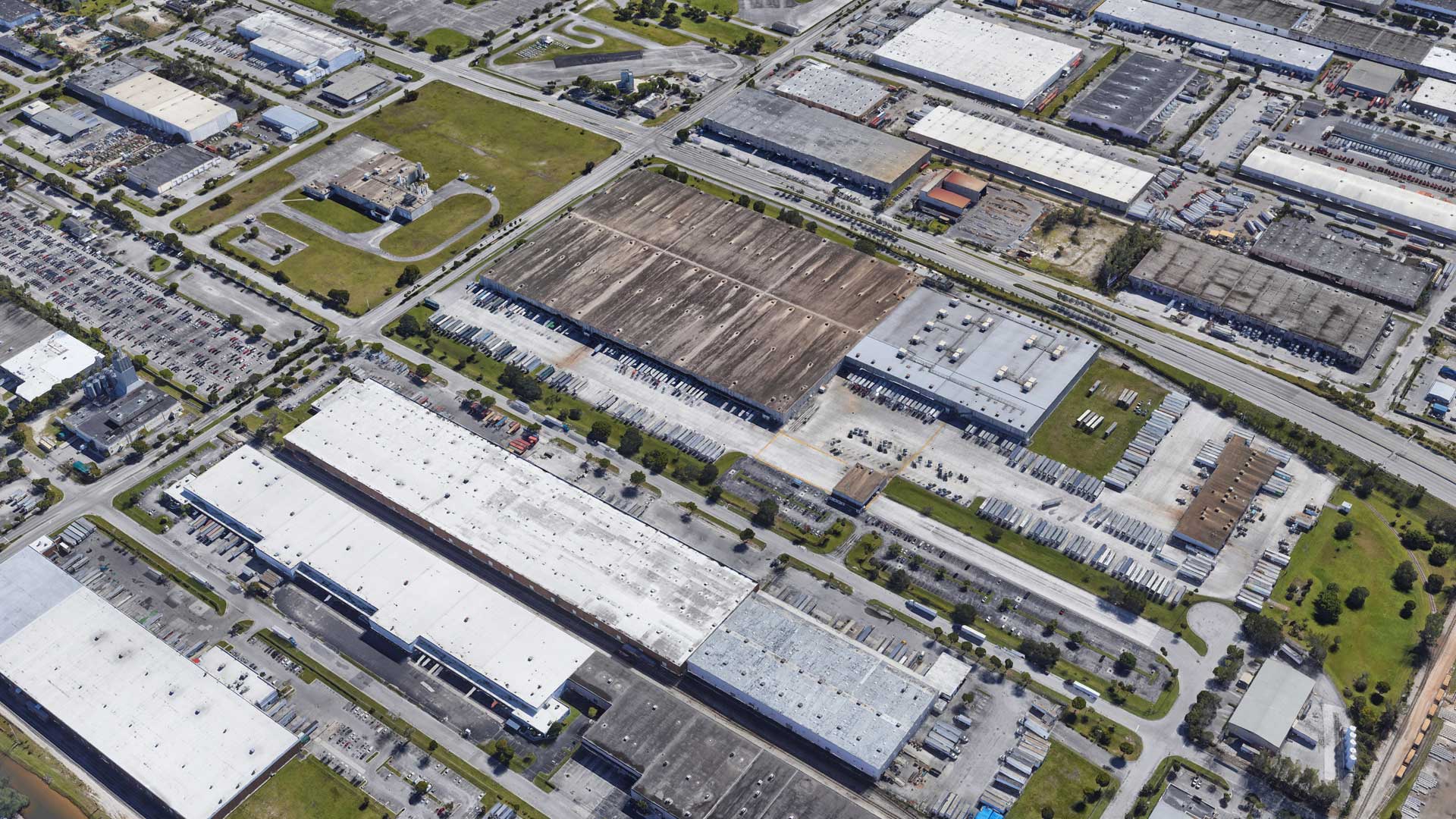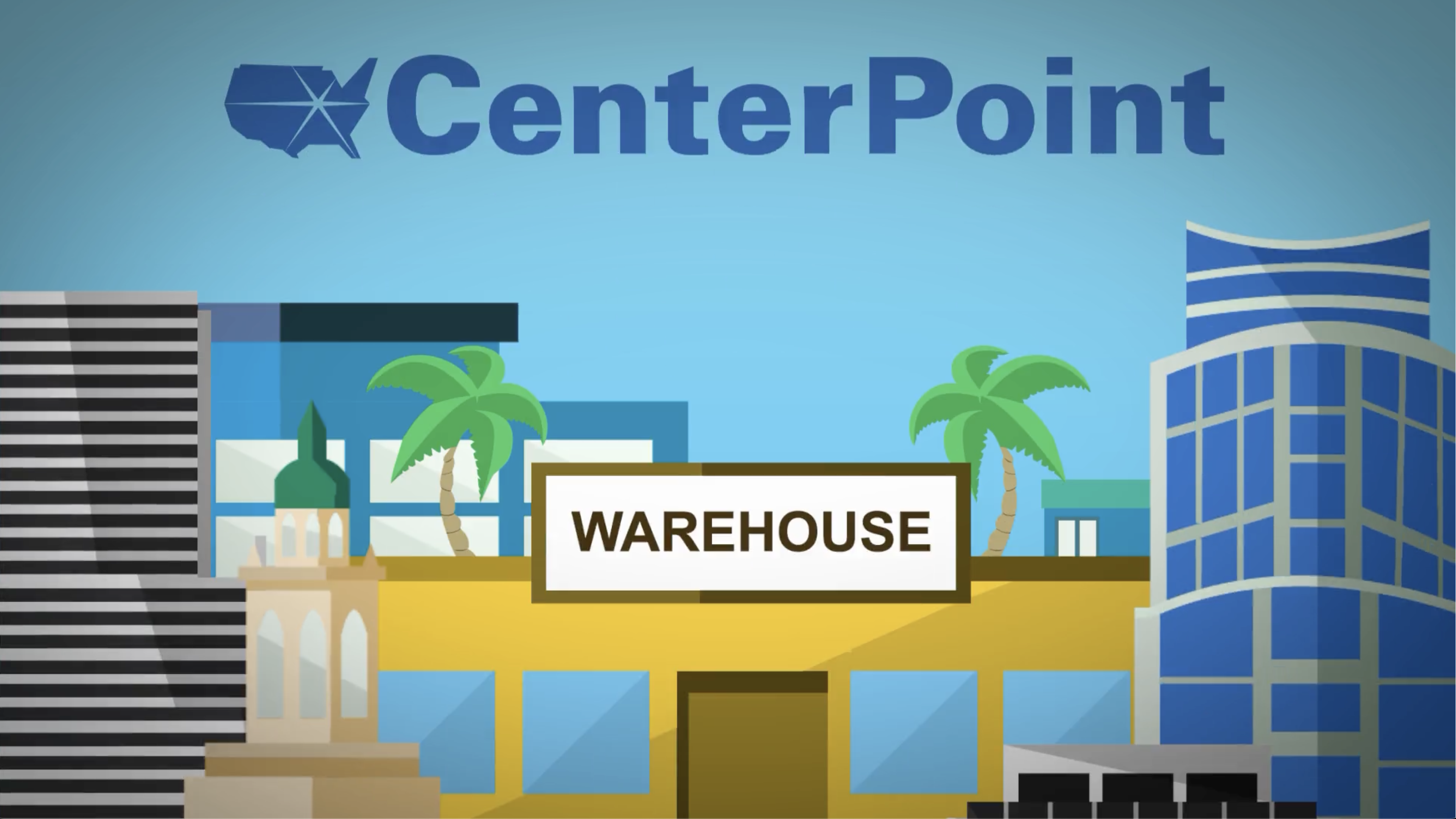Search Site
Back to Menu

Investing in Miami Case Study
Executive Summary
CenterPoint continues to build its nationally diverse port and intermodal portfolio with acquisitions in Miami, one of the largest and fastest growing industrial markets in the country. This case study explores how CenterPoint came to acquire three assets in Miami during 2017.
Defining the Strategy
CenterPoint’s investment strategy looks to build a diverse port and intermodal portfolio in the United States. The Company invests in a multitude of industrial properties, including warehouses, distribution centers, transload facilities, truck terminals, container yards and trailer yards. These assets are transportation advantaged and can often provide massive drayage savings. Furthermore, these properties often offer close proximity to dense population centers, rail-service and extra land for truck, container, trailer and car parking. Since FY2011, CenterPoint has acquired $1.74 Billion of strategic operating assets amounting to 23.7 Million SF.
Identifying a Dynamic Market
With this strategy in mind, CenterPoint zeroed in on the growing industrial market of South Florida, specifically Miami. Widely recognized as the gateway to Latin America, the Miami market is responsible for handling one-third of all trade between the United States and various Latin American countries[1]. A trusted brokerage firm reports 183 Million SF in its Q317 Miami market industrial overview, an 8.8 Million SF increase in the last six years.[2] In addition, Miami has 3.6 Million SF under construction and a 4.5% vacancy rate. E-commerce is driving demand for companies to secure industrial warehouse and distribution centers for regional logistical operations in Miami.
Miami’s growth is also evident in its booming population. Census figures record 2.7 Million people in Miami-Dade, which saw an 8.6% population surge between 2010 and 2016.[3] Approximately 6 Million people live in the Miami – Fort Lauderdale – West Palm Beach metro area, and that number is expected to surpass 6.2 Million by 2020.[4] The growing population, coupled with a flourishing tourism market, has resulted in strong job growth.[5] Between December 2010 and February 2016, total non-farm employment in Florida rose by 1,041,400. The Miami – Fort Lauderdale – West Palm Beach metro area has had year-over-year employment gains of 50,000 or more since October 2012.[6]
Making a Mark in Miami
Miami’s strong population and job growth are positive trends driving consumer demand, which ultimately drives the need for e-commerce facilities. In February 2017, CenterPoint acquired one such facility in Medley, Florida. Situated on 32 acres, this 306,703 SF cross-load facility was CenterPoint’s first investment in the dynamic South Florida market. Built in 2009, this asset is very modern for the area and features ample car parking. This facility serves as a critical part of the logistics systems for one of the largest delivery companies in North America. The facility has seven acres of built-in expansion land to accommodate future growth and increased demand – an important feature in a heavily land-constrained market.
In August 2017, CenterPoint continued to grow its reach by acquiring the largest warehouse in Miami-Dade County. While often difficult to find such large sites in a top market, the 961,345 SF facility proved to be a unique real estate opportunity for the Company. The building is one of only five buildings greater than 700,000 SF in all of South Florida and was acquired well below replacement cost. Serving as a central distribution center for a supermarket chain, the building supplies stores from the Florida Keys to Port St. Lucie, including the Gulf Coast. The 59-acre site’s excess trailer storage is unique for the Miami market, featuring 2.79 trailer spots per 10,000 SF compared with the market average of 1.74 trailer spots per 10,000 SF.
In December 2017, CenterPoint secured its foothold in the region by acquiring another facility in Miami. Built in 2017, the Class-A, 130,000 SF warehouse is the newest facility of its size in Miami’s Gratigny submarket. In addition, the facility is one of the only free standing, secured single tenant buildings on the eastern side of the Miami market. The tenant, a leading company for storage and information management services, benefits from high-population proximity and last-mile delivery with this site.
For all three assets, location was a key factor in the investment. Each site has close proximity to ports, interstates, airports and railways. Immediacy to these transportation modes helps achieve more efficient and faster last-mile delivery. Ultimately, the strategic location of these properties allows for reduced transportation and drayage costs to tenants.
Miami Market Outlook
E-commerce continues to drive strong demand for industrial product, especially in locations with dense populations like Miami. Thus, e-commerce will continue driving absorption in Miami. As users pursue last-mile sites for a faster delivery, activity in core submarkets is expected to persist. Much of the anticipated sustained demand can be credited to the $5.25 Billion expansion of the Panama Canal.
However, the Miami market faces a challenge: a finite amount of industrial land remains in Miami-Dade County. Reports by a leading real estate service firm show Miami was already land constrained in 2012 with approximately 2,600 acres available[7]. Since 2012, this market data reveals almost 500 acres of land has been absorbed. With approximately 2100 acres of vacant land currently available for future industrial development in Miami, availability may impact future investment opportunities.
Nonetheless, CenterPoint will continue to look for investment and development opportunities in South Florida. While the Company was able to hit the ground running with sizable deals in this region during 2017, the CenterPoint team will also seek out smaller deals in the future. Ultimately, Miami’s low vacancy rate and strong user demand make this target market a region CenterPoint will continue to actively pursue.
Sources
Subscribe
Microsite Request
